The Tewkesbury Christadelphians: A History
I was aware of a group called the ‘Christadelphians’ when, as a child, I walked past a meeting house in Grimsby en route for my Methodist Sunday School. I also had a primary school friend whose parents belonged to the group. More than that I knew little. However, when contacted by Mike Page I was surprised to learn of a historical presence in Tewkesbury. Inquisitively, I asked him to enlighten us further. (Editor)
to Expand
The very first Christadelphian lecture held in our town in 1867 was delivered by Mr. Robert Roberts from Birmingham, the great-uncle of Walter Roberts of Evesham, who still lectures today.
The name ‘Christadelphian’ simply means ‘brethren in Christ’, a title applied by J. Thomas M.D. in 1864 to a growing group of men and women who had become dissatisfied with traditional Church teaching. Their intention: to search out for themselves basic Bible teaching and the beliefs of the first Century Churches.[1]
The year 1864 also brought the first publication of The Ambassador (later The Christadelphian), a magazine for the benefit of the new community. The magazine has been published monthly ever since and the back issues have provided much of the information for this piece of research.
Photo right: The Roberts Family:Back Row: Amy Wilkes (Sis. H. Galbraith), Sarah Jane Roberts (Sis. Ladson), Eusebia Roberts (Sis. Firth); Front Row: Robert Roberts, his mother (Sis. Roberts, Sr,), his wife (Sis. Jane Roberts). (‘Antipas’)
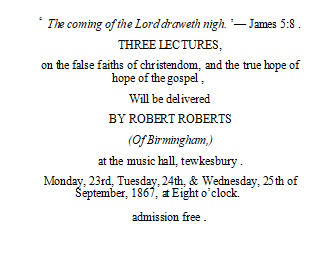
The first appearance of Tewkesbury in the magazine Intelligence relates to a Mr. William Osborne (1825-1899), a Grocer and ‘Tallow Chandler Master’ with premises at 105 High Street,[2] a “holder of Civic offices”. Mr Osborne had borrowed several books from a Commercial Traveller, Mr. Turner of Birmingham, which had posed challenging questions about his beliefs. He invited Robert Roberts, the author of one of these books, to Tewkesbury for three days to deliver a course of lectures in the Music Hall[3] in September 1867.
The advert reproduced on the right attracted up to 300 of the ‘respectability’ of Tewkesbury’
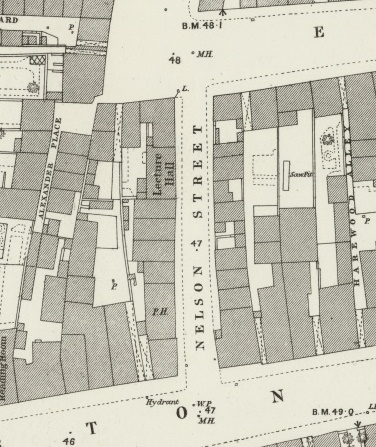
Right: 1883 O.S. Map which shows position of Christadelphian/Salvation Army Lecture Hall. That whole line of buildings was removed in the 1990s to widen Nelson Street.
Around the same time Thomas Bosher, a senior partner in a firm of London merchants, having also read Mr. Roberts’ books, embraced the Christadelphian faith. It is thought that his business dealings brought him into contact with both William Osborne and Mr. W.R. Otter, the Station Master at Cheltenham Midland Railway Station. From these meetings, both the Cheltenham and Tewkesbury Christadelphian ‘Ecclesias’ were formed.
The Minute books of the Gloucester Christadelphians date back to 1878 and are an invaluable source of information about those early days.
William Osborne was the only Christadelphian in Tewkesbury until January 1872 when both his oldest son Edward and the young James Horton (an Outfitter of No. 2 High St.) were baptised and joined the newly founded Tewkesbury ‘Ecclesia’.4 By September 1873 the number had been boosted by the baptisms of Francis Millard,5 Eliza Smith and Enos Healy.6With six members it was possible to hold regular public meetings. Having failed to find a suitable hall available for rent, on 21 Jan 1877 after “many hindrances and delays” (nothing changes in the building trade!!), the purpose-built ‘Lecture Hall’ on Nelson St. was opened. It was designed to “comfortably seat 110” and when public lectures were given was “nearly full on each occasion.”
demolition in early 1990s. (T.B.C.)Click Image
to Expand
The new hall made several other activities possible, one of which was a combined ‘fraternal gathering’ of the Tewkesbury, Gloucester and Cheltenham Christadelphians. In January 1879 the members agreed to pay one penny a week each towards the cost of these 4 monthly meetings. For the September meeting in Gloucester, 13 members from Tewkesbury are recorded. The days concluded with a public lecture attended by up to 137 adults and 20 children.
Another activity made possible by the opening of the hall was a well attended Sunday School with local children being taught by members. The first Sunday School was held on 21 October 1877. Mr. and Mrs. F. Millard are recorded as having been ‘active workers’ in this respect.
After this initial era of intense activity the records become a bit sketchy.
The deaths of two members are recorded in 1888 and 1889, the latter being of Benjamin Morris, a Tewkesbury Framework Knitter.
It seems that gradually the number of Christadelphians in Tewkesbury reduced as age took its inevitable toll and employment opportunities took younger members away to larger towns. By 1898 those who remained met in William Osborne’s house, Watledge, Barton Road. The ‘Lecture Hall’ was sold to become ‘The Salvation Army Barracks in Nelson Street’ sometime between 1897 and 1902. It was finally demolished as part of a road widening scheme in about 1990.
Although there hasn’t been an ‘Ecclesia’ in Tewkesbury now for over 100 years, several Christadelphians live in the town and Learn to read the Bible effectively seminars are held every week at Tewkesbury School. Modern transport affords travel to Pershore, Cheltenham, Evesham and Malvern where Christadelphians still meet on a regular basis.
References
- The movement originated in the U.S.A.. Local organizations, called Ecclesias, make no distinctions between clergy and laity. Ruling brethren are chosen to serve without compensation. (Encarta)
- 105 High Street is today the art shop of the Stationery Art Ltd... (Editor)
- Now the Watson Hall, Barton Street.
- James Horton married Stella Maria Osborne of Tewkesbury, daughter of William Osborne, wedding at Dursley (Register, 19/04/1879 p1/6)5 A shoemaker. (Editor)
- A shoemaker of 21 Barton Street. (Editor)
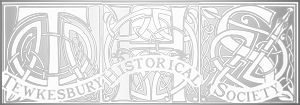
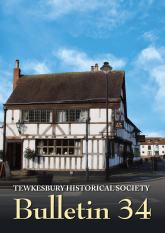
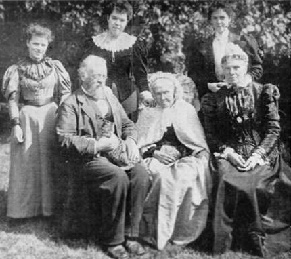
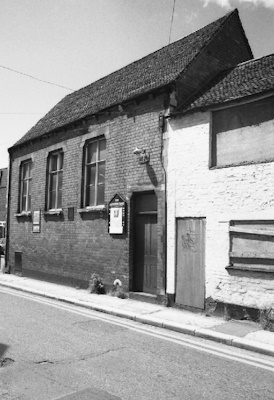
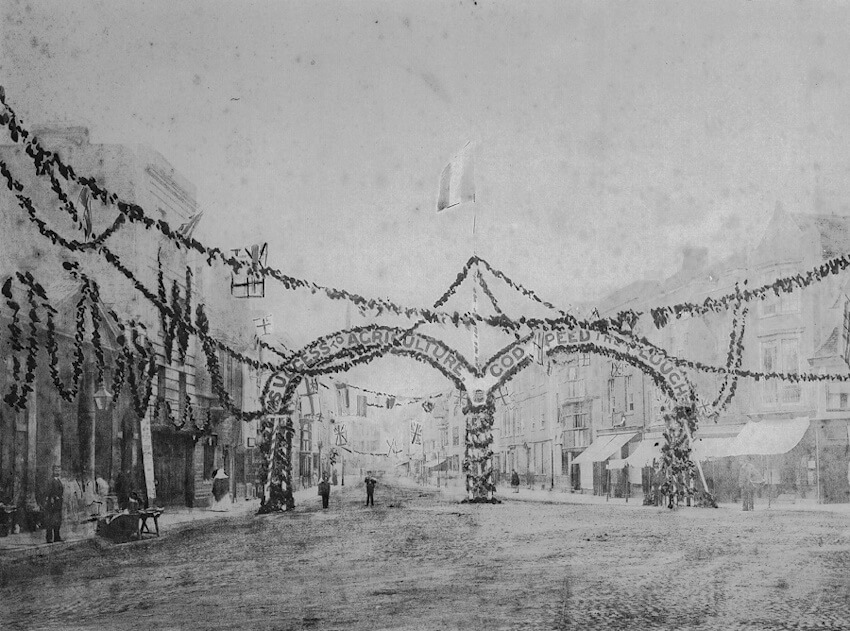
Comments